The implementation of school voucher programs in various states across the U.S. has provided a wealth of data on the consequences of these systems, both in educational outcomes and broader socio-economic impacts, including taxation. These outcomes offer important lessons for states like Texas that are considering adopting such measures.
Examples from Other States
1. Wisconsin
Wisconsin’s Milwaukee Parental Choice Program, one of the oldest in the nation, offers insights particularly in terms of academic outcomes and fiscal impact. Research has shown mixed academic results, with some studies indicating slight test score improvements for voucher recipients but others showing negligible or negative impacts compared to public school peers. On the fiscal side, the program was initially touted to save money; however, the net effect has evolved over time. Recent analyses suggest that the program draws significant amounts of state funding away from public schools, essentially requiring increased state spending to support both public and private school systems concurrently.
2. Ohio
Ohio’s EdChoice Scholarship Program has faced criticism for leading to increased segregation and minimal academic improvement. A 2016 study found that students using vouchers to attend private schools fared worse academically than those who stayed in public schools. Taxpayers not only continue to fund public education but also subsidize private educations through vouchers, which has not yielded the promised improvements in educational quality. This has prompted questions about the efficacy of spending public money on private educational institutions.
3. Indiana
Indiana has one of the broadest voucher programs in the country, which has been praised for expanding choice but also criticized for its broad reach, including subsidizing families who might have afforded private school tuition without public funds. The fiscal impact here includes a significant transfer of funds from public to private schools, which critics argue distorts the original intent of helping disadvantaged students and instead creates a parallel funding system for private education. The program’s expansion was associated with a decrease in public school funding, leading to budget shortfalls in several districts.
4. Louisiana
The Louisiana Scholarship Program, intended to help low-income students in low-performing public schools attend private schools, resulted in decreased academic performance, particularly in math. This outcome prompted reconsiderations of the program’s structure and goals. The state spends millions on vouchers annually, which has been a point of contention as public schools continue to struggle with underfunding issues.
5. Florida
Florida’s Tax Credit Scholarship Program is one of the largest in terms of participation. It is funded by corporate donations that are offset by tax credits, theoretically minimizing the direct fiscal impact on public funds. However, critics argue that it reduces potential tax revenue that could fund public services, including education. While some reports claim improved graduation rates among participants, others criticize the program’s lack of transparency and accountability.
Consistent Issues and Fiscal Impacts
Increased Taxes and Misallocated Funds One common fiscal concern is that while voucher programs are often promoted as money-saving initiatives, they frequently require either increased state spending or reallocation of funds that detract from public education systems. This can result in higher taxes if funding does not keep pace with the dual demands of supporting both public and private schools.
Fraud and Financial Mismanagement The expansion of voucher programs often leads to instances of fraud or financial mismanagement, where funds are not adequately tracked, and private schools receiving vouchers do not adhere to high standards of accountability. This not only undermines the educational goals of the programs but also results in wasteful spending of taxpayer money.
Undermining Public Schools Perhaps the most significant fiscal impact is the indirect cost of undermining public schools. As funds are siphoned off to private institutions, public schools lose the financial support necessary to maintain facilities, hire quality teachers, and provide services. This can exacerbate inequalities in education, as public schools are predominantly attended by lower-income students.
Conclusion
The experiences of states with voucher programs offer vital cautionary tales for Texas. While the allure of school choice is strong, the evidence suggests careful implementation is crucial to avoid negative academic outcomes and undue fiscal burdens. Any voucher program needs robust oversight and accountability measures to ensure that it genuinely benefits students and does not detract from the state’s obligation to provide quality public education. As Texas debates this issue, it will need to balance these considerations to avoid the pitfalls observed in other states.
Frank Carrasco
